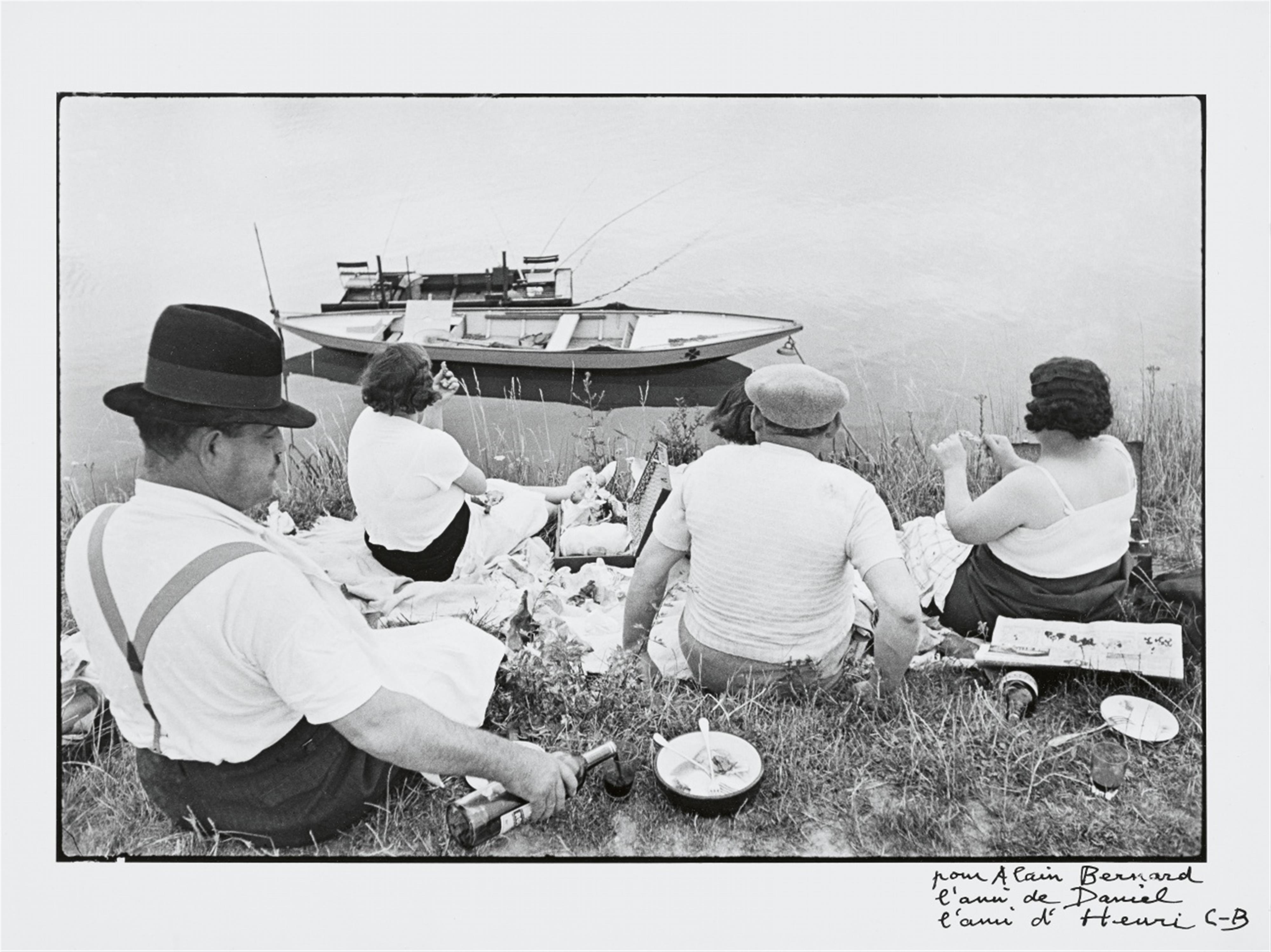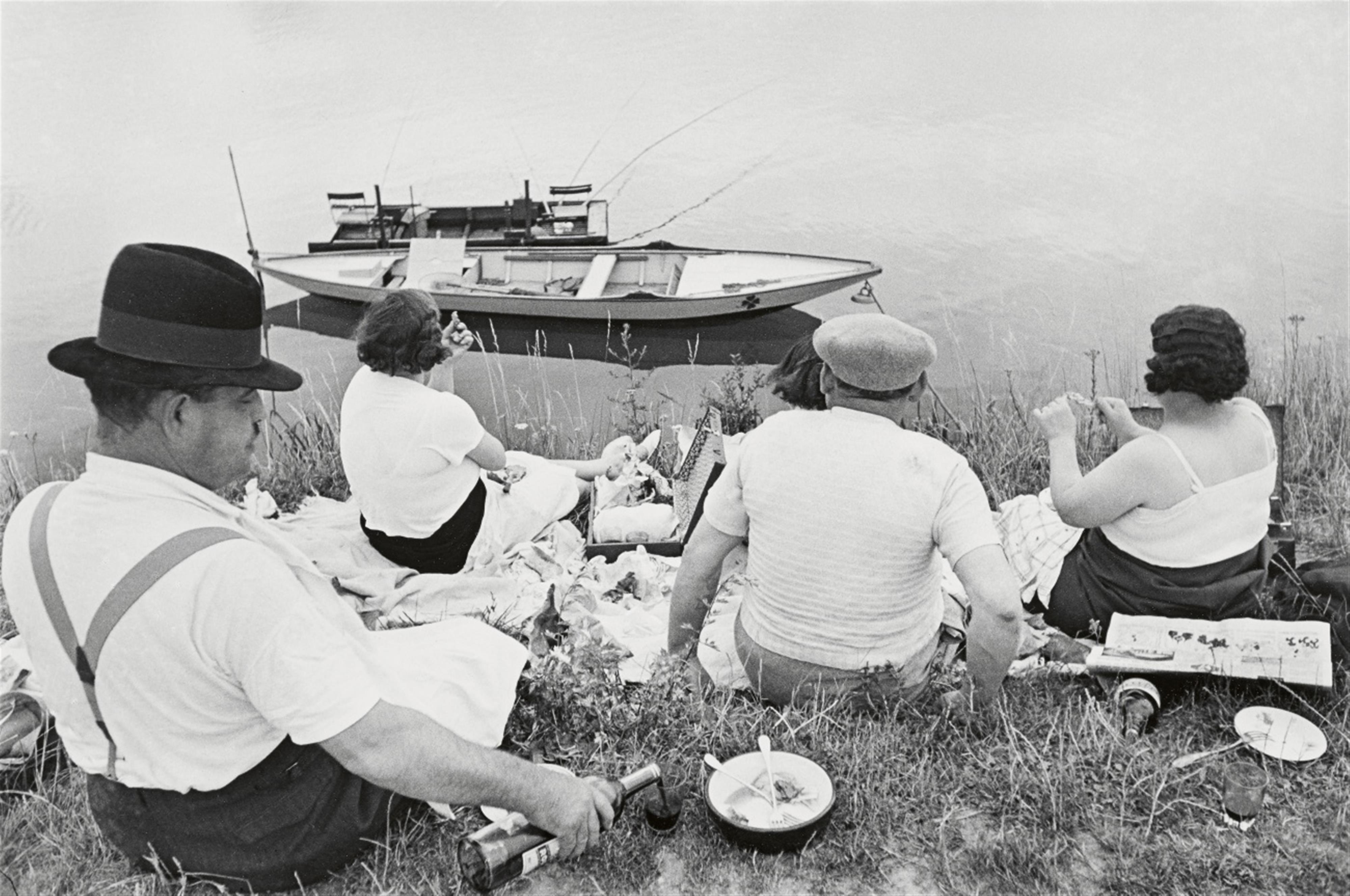Henri Cartier-Bresson
Sur les Bords de la Marne
1938
Gelatin silver print, printed 1970s. 24 x 36 cm (30 x 40 cm). Signed and dedicated in felt tip pen in the margin lower right. - Matted.
The Frenchman Henri Cartier-Bresson pertains to the most renowned and significant photographers of the 20th century. He is regarded as the undisputed master of the 'moment décisif', that 'decisive moment' in which the elements of reality combine in the camera lens for a split second to form a significant and aesthetically concise composition. Cartier-Bresson himself had coined the term in the preface to his 1952 epoch-making photo book Images à la Sauvette (1952). On a double page, he also depicted Sur les Bords de la Marne, one of the most famous photographs of the photographer's early work, with all the characteristics connected with the name Cartier-Bresson.
The photographer approaches the two couples from behind. They are sitting slightly below him and have settled down to a picnic on a warm summer's day on the banks of the Marne near Paris. The easy handling and inconspicuousness of his Leica, once described by Cartier-Bresson as an 'extension of his eye', allow him to remain completely unnoticed, 'approaching the subject on tiptoe [...]. With silent steps, but with a keen eye. No turbulence, you don't disturb the water before you go fishing.' No staging, no pose can be found in this picture of the petit bourgeois summer idyll, but instead a multitude of small details that speak for themselves, details observed with a fine sense of humour from a short distance.
Taken from above, the grass-covered bank of the river divides the landscape-format composition exactly in the horizontal centre of the picture. Other elements such as the narrow boat lying calmly in the water or the newspaper on the right edge of the picture emphasise its strict horizontal orientation, while the outlines of the plates, glasses and headgear, perceptible as elliptical forms, set accents - a finely balanced interplay of different forms and clair-obscure contrasts. With his incomparable feeling for formal references, Cartier-Bresson transforms the spatial constellation of the found situation, which is as fleeting as it is accidental, into a timeless pictoriality. In this way, the photograph became an emblematic representation of the leisure activities of the French working class of the era, which only enjoyed privileges previously reserved for the bourgeoisie due to the introduction of paid holidays.
Provenance
Private collection, Paris
Literature
Henri Cartier-Bresson, Images à la Sauvette, Paris 1952; Henri Cartier-Bresson. Photographer, London 1979, plate 145; Aperture Foundation (ed.), Masters of Photography: Henri Cartier-Bresson, New York i.a. 1997, ill. p. 27; Henri Cartier-Bresson, The Mind’s Eye, New York 1999, ill. p. 52; Henri Cartier-Bresson, de qui s’agit-il?, exhib.cat. Bibliothèque Nationale de France, Paris 2003, plate 69; Yves Bonnefoy, Henri Cartier-Bresson. Die Photographien, Munich 2016, ill. pp. 308




